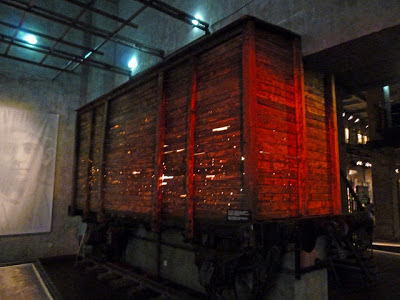When in Udabno, discerning diners can be found at the Oasis Club Restaurant Bar, the town's finest establishment.
I couldn't resist a little travel guide silliness, but lunch in Udabno turned out to be one of the highlights of my recent time in the Republic of Georgia.
The day began at Mtskheta, visiting Svetitskhoveli Cathedral early on, planning to push on to Davit Gareja during the middle of the day and reach Sighnaghi before nightfall--an ambitious schedule given the general state of Georgian roads. I have been to Davit Gareja monastery twice before, but was anxious to return again.
St. Davit, one of the thirteen Syrian Fathers, founded the monastic complex in the 6th-Century, and the institution has loomed large in Georgian history ever since. In a country chock-a-block with holy sites, Davit Gareja occupies a special place. On Pascha, in 1615, Shah Abbas of Persia ordered thousands of monks beheaded at Davit Gareja. The Soviets shut it down in 1921 and were using it for target practice in 1987. The authorities relented after widespread student demonstrations (as noted in a previous post, the modern story of Georgian Orthodoxy is largely that of the young.) The Georgian government tried to do the same thing again in 1997, but were once more stopped by student protestors. The site is an active monastic center today. The monastery perches on a ridge in the far southeastern corner of Georgia, actually on the Azeri border. In my estimation, the landscape very much resembles eastern Wyoming or Montana--grasslands as far as one can see on these broad, rolling hills. Hay is being baled in some of the fields, and other hillsides Georgian cowboys herd their cattle. In the immediate vicinity of Davit Gareja, the countryside takes on an almost surreal look, with the hills suddenly peaking into jagged, rocky escarpments. Going by bus, it takes about an hour and a half to reach the monastery once you turn off the main road at Sagarejo.
The residents of Udabno are ethnically Svan, from a village in the High Caucasus in the opposite corner of the country--a region as completely at variance with these wide open Kakhetian vistas as one could imagine. Several decades ago, a landslide swept away a mountain village. In true Soviet style, the authorities transported these villagers en masse across the country to this location. Here the government did what the bureaucrats knew to do--they erected a model town, one concrete block house after another, located 20 kilometers past the middle of nowhere.
Udabno is a pretty dismal looking place. Those who have had the wherewithal to go elsewhere have apparently done so. The shells of abandoned houses litter the outskirts of Udabno, resembling nothing so much as perhaps a movie set for Hollywood's latest post-apocalyptic thriller.
A young Polish couple, noting a steady stream of vehicles making the trek back and forth to Davit Gareja saw something else--opportunity. The took one of the abandoned shells and slapped on a coat of white, green and blue paint. That, plus a little electricity, a freezer, stove and beer tap, and some crates and boxes for tables and chairs, and voila, the Oasis Club Restaurant Cafe.
This was our fifth day into Georgia, and the food seemed to just get better and better the further we went. All the staples were in place--bread, tomato and cucumber salad, eggplant dishes, khachapuri, the cheese plate, watermelon, tarragon soda, draft beer, more khachapuri, etc.
Several additional items, however, launched this particular feast to the top of my list. First, there was the Udabno cheese. Georgia is known for its regional cheeses, and every meal contained a plate of three to four varieties. The local Udabno cheese was the best of the lot. I think I would return, if only for the cheese. Next, there was the bowl of ratatouille (pictured here.) Oh man, it was wonderful. Then our hosts presented us with the kubdari, a Svan dish. This looked like the ubiquitous khachapuri (cheese bread), but wonder of wonders, it was filled with meat! Any traditional culture that is worth its salt will have a meat pie, and kubdari is the Georgian version.
We finished off our feast by relaxing with some ice cream, as well as some lattes and iced coffees. Soso found time for a game or two of backgammon in the inside dining room. Cathleen worked on commandeering some of the special "Svantian salt." I am no "foodie," but some meals stand out in my mind. Sitting on a crate at the back of the Oasis Club Restaurant Cafe will not soon be forgotten.
At the time of our departure, the road was stacking-up with customers coming back from Davit Gareja. Our hosts scurried around to tend to everyone, and suggested we stop on our return and settle-up then. Try doing something like that in the good old USA. We did stop and pay our tab on the way back. At that time, the electricity had gone out. Perhaps a generator should be the next capital improvement at the Oasis Club Restaurant Cafe. We wouldn't want the beer to go warm.
























